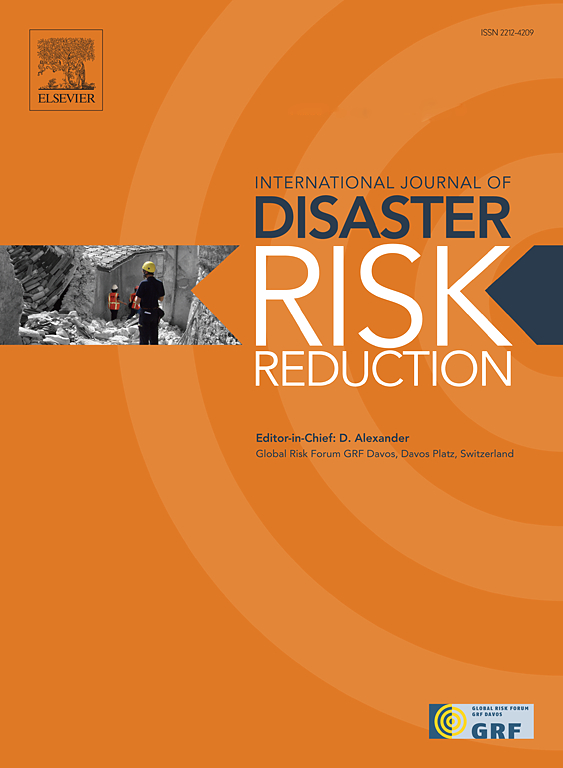A data-driven framework for an efficient block-level coastal flood risk assessment
IF 4.2
1区 地球科学
Q1 GEOSCIENCES, MULTIDISCIPLINARY
International journal of disaster risk reduction
Pub Date : 2025-04-09
DOI:10.1016/j.ijdrr.2025.105478
引用次数: 0
Abstract
The escalating global frequency and severity of disasters highlight the need for regional to national risk assessments, necessary for risk-informed decision-making. The susceptibility of the Gulf Coast of the United States to flooding underscores the urgency of this need. Here, we introduce a framework for fine-scale (i.e. block-level) flood risk assessment in low-lying coastal regions prone to compound hazards that systematically addresses limitations in existing approaches. Focused on reducing subjectivity and enhancing spatial resolution down to the block level, our proposed framework integrates hydroclimatic, geomorphological, socio-economic, and infrastructure variables, and incorporates indicators including land use, soil type, elevation, and demographic data to ensure a comprehensive evaluation of flood vulnerability. Additionally, we capture the multidimensional nature of compounding hazards by accounting for both precipitation probability and storm surge height in our analysis. To minimize subjectivity in determining the contribution of various risk indicators, a supervised machine-learning algorithm classifies flood risk levels based on reported damages since 2006. The results highlight that 60 % of the studied Gulf Coast blocks face high to very high flood risk, necessitating proactive risk management. Such high-resolution risk factorization could provide insights for informed decision-making in emergency responses, land use planning, and resilience assessment.
求助全文
约1分钟内获得全文
求助全文
来源期刊

International journal of disaster risk reduction
GEOSCIENCES, MULTIDISCIPLINARYMETEOROLOGY-METEOROLOGY & ATMOSPHERIC SCIENCES
CiteScore
8.70
自引率
18.00%
发文量
688
审稿时长
79 days
期刊介绍:
The International Journal of Disaster Risk Reduction (IJDRR) is the journal for researchers, policymakers and practitioners across diverse disciplines: earth sciences and their implications; environmental sciences; engineering; urban studies; geography; and the social sciences. IJDRR publishes fundamental and applied research, critical reviews, policy papers and case studies with a particular focus on multi-disciplinary research that aims to reduce the impact of natural, technological, social and intentional disasters. IJDRR stimulates exchange of ideas and knowledge transfer on disaster research, mitigation, adaptation, prevention and risk reduction at all geographical scales: local, national and international.
Key topics:-
-multifaceted disaster and cascading disasters
-the development of disaster risk reduction strategies and techniques
-discussion and development of effective warning and educational systems for risk management at all levels
-disasters associated with climate change
-vulnerability analysis and vulnerability trends
-emerging risks
-resilience against disasters.
The journal particularly encourages papers that approach risk from a multi-disciplinary perspective.
 求助内容:
求助内容: 应助结果提醒方式:
应助结果提醒方式:


